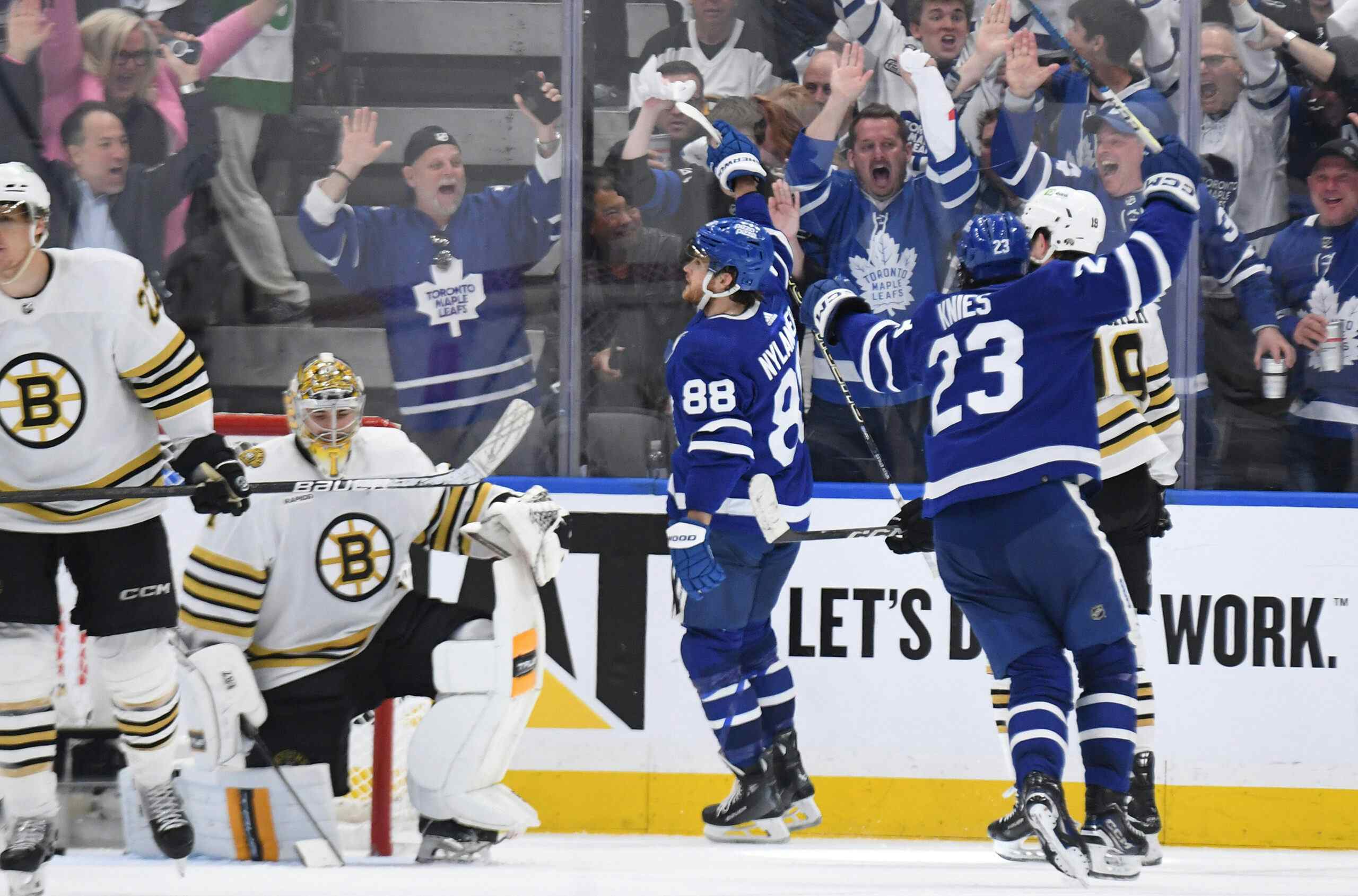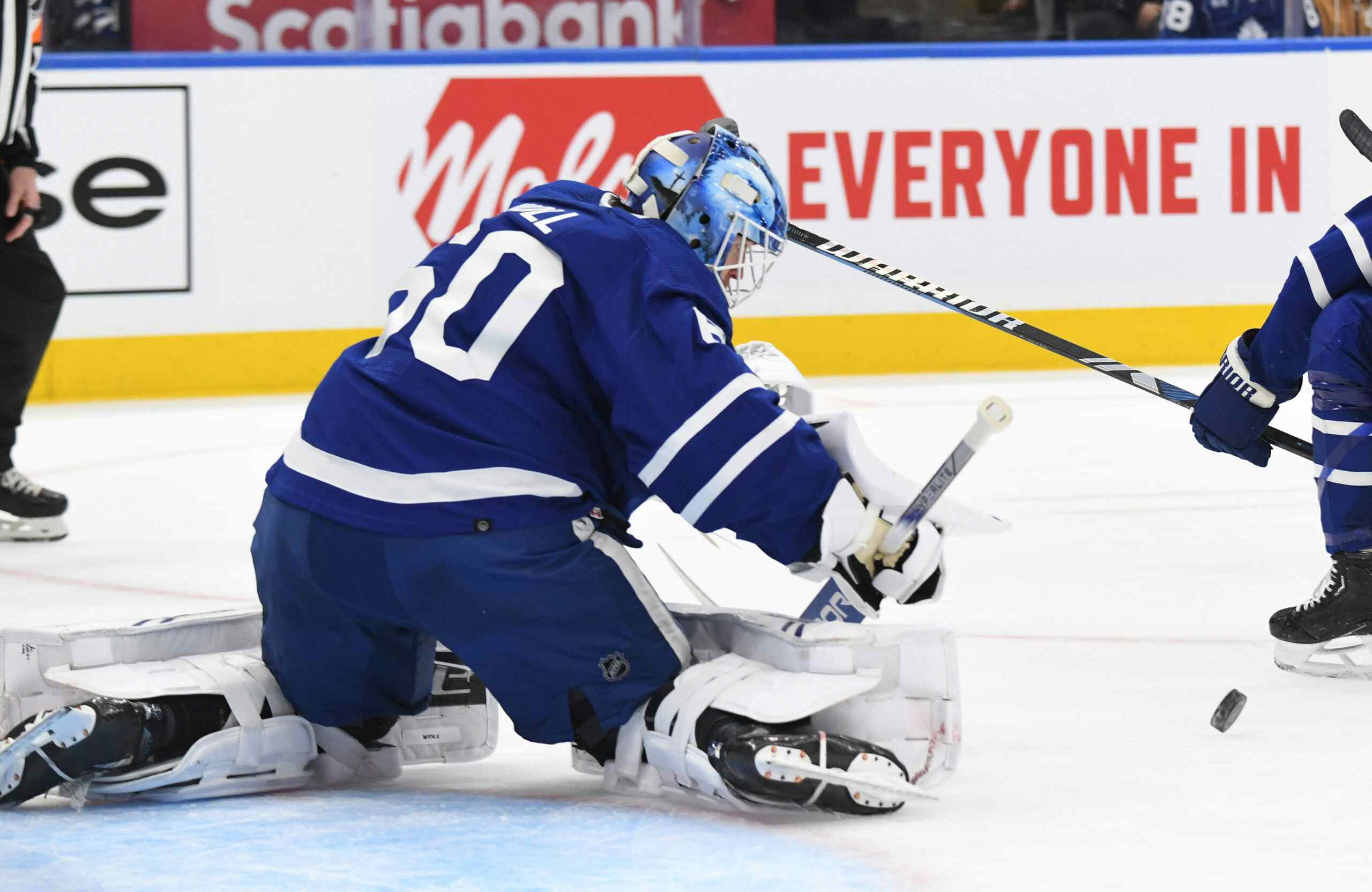Matthews, Laine, and my street hockey reality check
I was overweight my entire childhood. By my late teens, that was even more apparent; you don’t find many 5’10, 350-pound teenagers who have any interest in playing sports. Even football players with that build tend to be a bit taller. But I loved playing soccer and street/ball hockey with my friends and we kept ourselves out of trouble by hitting the mean side streets of Keele and Wilson every single afternoon with a couple of plastic nets, sticks, and beat up tennis balls.
I didn’t have the stamina (not even close) to play up front in soccer games, so I became a full-time goalkeeper. In hockey, though, I loved to score goals, so I watched NHL highlights every night and taught myself every trademark deke and shot I could in hopes that if I couldn’t out-run them, I’d out-skill them.
For the most part, it worked. I became the last person you ever wanted to leave remotely uncovered on my block. I’d pretty much only lose breakaway relays when I got bored. All of my friends thought that I was a superb hockey player that could have maybe done great things if I was in shape and on skates. I started to buy into it too.
The truth of the matter is, the thought was a wrong one, and the warning signs were always there. A game of street hockey filled with a bunch of kids is defined by rush plays. You play for the turnover, someone is always cherry picking, and nobody ever sets up a formation. You trade scoring chances until the sun goes down. It’s no shock that somebody with quick hands and a nose for the net is going to succeed there.
Eventually, I slimmed down and got to put some of the theory to the test. I still had places to go where I could play my style of game and keep my ego up, but it was around this time that I was invited to practice with people who actually played competitive ball hockey, and occasionally fill in during games when they were missing players. It was a massive reality check.
Competitive ball hockey, hacking and slashing aside, is incredibly structured. There’s too much cardio involved for it not to be; you can’t run around a full-sized rink for an extended period and expect a rush game. After 20+ years of teaching myself to be “guy with hands”, I realized that, while I could make a play that looked good, the key to sustainable success was fundamental play. It was being able to react to a set play just a little quicker than the others, make a routine pass with just a little bit less prior hesitance, or sneak into just the right spot to score on an otherwise unimpressive shot. “The little things,” as analysts tend to call them.
There’s a point to this, beyond humblebragging and humblebashing myself for how I play a sport at an extremely casual level.
Video via /u/ImHuge on /r/Leafs
The first overall pick debate, beyond being driven by the media to keep you paying attention to their outlets, comes down to two fantastic young players who play two very different games.
Patrik Laine is street hockey me. A much better and more talented version, of course, but the scouting reports and the highlight film all back that up. Nose for the net, wicked shot, makes himself available on the rush and has the hands to win 1-on-1 situations. It leads to some amazing plays, especially in a tournament like these World Championships where we’ve seen him start his run off by beating up on Belarus and Germany, who don’t know what to do with a player like that.
Will it translate? I’d imagine much of it will, pure skill is hard to come by. But 1-on-1 play gets tougher when you face better defencemen, and shots from distance get tougher when you face better-prepared goaltenders and forecheckers who aren’t as willing to give you open lanes. Being known as the show stopper prospect will lead to increased focus on you, and it’ll be interesting to see how much of that he can carry over, through, and beyond his opponents.
On the other hand, you have Auston Matthews, who’s stock has been argued to have been falling because while he’s producing, he doesn’t look as game breaking. His highlight reels aren’t full of snipes and dekes, but him sending a pass to an open man, skating into an unguarded area, taking the pass back and tapping it in. Or look at his assist yesterday; he’s patient until the exact second he sees Dylan Larkin free up, sends to him, moves in the direction he needs to be if Larkin doesn’t score, wins the loose puck, sends it to Chris Wideman and gets the team the goal. He’s impossible to strip off the puck, and he’s impossible to track; his game is defined by “anybody can do that” plays, but he does them a step faster and finds more success in the process.
A good comparable for Matthews is John Tavares. Both players were praised as consensus number one picks years before gracing the podium. Both chased records all the way up their development programs, both were considered too good for junior before the start of their draft year (Tavares stuck around) though, and both were suddenly questioned in the final months leading to the draft.
In both cases, people pointed to their age and their short highlight reels despite gaudy numbers as reasons why they were hesitant. Both Matthews and Tavares were days from being drafted in the class prior, but add a few weeks to the equation and you can say the same about a lot of talent. Both saw their status come into question thanks to a “stunning 200-foot player” (defenceman Victor Hedman or forward Jesse Puljujarvi) and an exciting late bloomer (Matt Duchene or Patrik Laine). Rumours that the Islanders would be scared off by the slightly older, good at the basics Tavares persisted all the way to the hour before the draft, when many still believed that the team would opt for Duchene.
Both turned out to be great forwards, and Hedman turned out to be an elite defenceman. But Tavares ended up removing all doubt from those who weren’t sure that the “simplified game” version of him could thrive. You don’t see him on SportsCentre as often as a player once hyped up as a generational talent would normally be, but he’s a quality point-getter on a team that isn’t overly high-octane, makes everybody around him better, and tilts the ice. He’s a highly cerebral, clinical player who gives his entire team options and pushes the scoresheet in an unassuming way.
Every team needs a player like that, especially if they still possess creativity and talent. Even the flashiest players need a linemate that they can expect to find in a predictable position. Defencemen value having a forward they know can lend them a hand, or even keep them away from duress to begin with. Tavares became that guy. Mike Modano, who Tavares idolized and arguably the man to beat if Matthews wants to become the best American player ever, was also that guy. Hell, Wayne Gretzky has more goals than any player in history, but how many of them do you remember for their flashiness, not their historical significance?
Auston Matthews doesn’t play like a kid trying to show off on his block, and that’s okay. Patrick Laine does, and that’s fine too. But highlight reel plays against weaker opponents are creating an illusion that he has more to offer, which might not necessarily be true; especially to a team like the Leafs, who already have William Nylander and Mitch Marner in the system for that purpose. The entertainment value might be tantalizing, but it’s the results and the relative ease in how he gets them that set Matthews apart as the consensus pick. Not only his style more likely to translate and better suited for the highest level, it also compliments what the team already has.
As for me, I’m going to shoot a ball into an empty net. You never know when your teenage years can come back around, right?
Recent articles from Jeff Veillette





